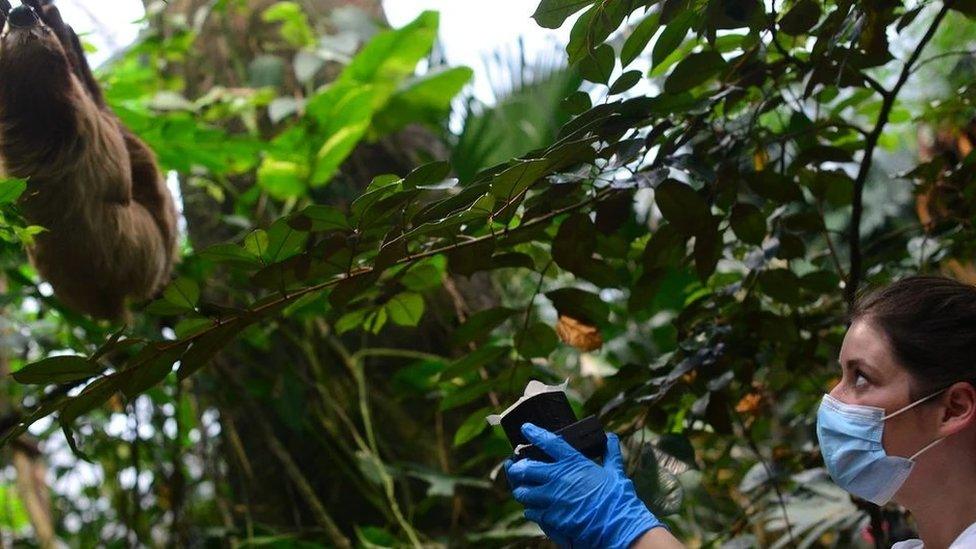Animals can be detected from DNA in the air
- Published
- comments

Associate Professor Kristine Bohmann collect air samples at Copenhagen Zoo
Researchers have found that by testing the air they can work out which animals have been in an area.
Scientists analysed environmental DNA (eDNA) and found that the animals give off genetic material through their breath, saliva, fur or poo and that can tell them which animals have been around.
This technique could mean that animal populations can be monitored without needing cameras or humans to observe them, saving time and making it much easier to study animals in hard to reach places.
Professor Elizabeth Clare of York University uses sensitive filters attached to vacuum pumps to collect more than 70 air samples
The findings were discovered by two groups of researchers, one in Denmark and the other in the UK and Canada.
The scientists collected air samples from Hamerton Zoo Park in the UK, and Copenhagen Zoo, Denmark.
Both research groups detected the presence of lots of different animal species within the zoo, but surprisingly both teams also found species from areas around the zoo.
The Eurasian hedgehog, which is endangered in the UK, was detected from outside of Hamerton Zoo and the water vole and red squirrel were detected around the Copenhagen Zoo.
"We were able to identify DNA from 25 different species of animals, such as tigers, lemurs and dingoes, 17 of which were known zoo species.
"We were even able to collect eDNA from animals that were hundreds of metres away from where we were testing without a significant drop in the concentration, and even from outside sealed buildings," says Assistant Professor Elizabeth Clare from York University, Canada.
How can this research help the study of animals?
The researchers say the use of air testing to discover animals needs more work but they hope it could transform the way scientists study and monitor animal biodiversity.
"The non-invasive nature of this approach makes it particularly valuable for observing vulnerable or endangered species as well as those in hard-to-reach environments, such as caves and burrows", says Professor Clare.
This method of testing means cameras don't have to be set up, which can be difficult because you need to know where you think the animal may be and go through all the footage.
Also the animal doesn't have to be seen for researchers to know they have been in an area, instead they can pick up on their traces of DNA from the air.
- Published13 October 2020
- Published25 February 2021
- Published23 June 2020
